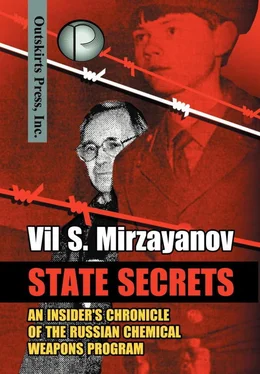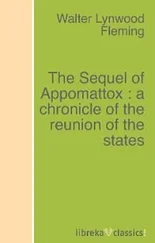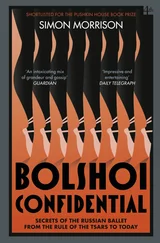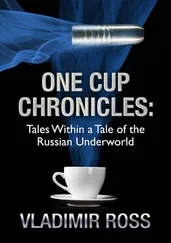In the end, a senior scientist in Ginsburg’s laboratory, Pavel Gitel, began to intensively research methods for using hollow needles filled with ricin, which could be packed into a bomb or missile. With the explosion of the bomb, thousands of these needles would be thrown around, piercing people’s bodies. Such tests were carried out; however, it seems that no particular success was achieved. Yet, there is every reason to suppose that exactly this ricin, produced at GOSNIIOKhT, was used by KGB agents to try to kill Aleksander Solzhenitsyn. Fortunately they were not successful. According to the testimony of General Oleg Kalugin, the Bulgarian Special Services which were trained by the KGB killed the famous Bulgarian dissident Georgi Markov, in London in 1973, with ricin which was injected into him by a special umbrella. [29] On Markov’s murder see, Richard H. Cummings, “The Murder of Georgi Markov,” Intelligencer 10, no. 1 (Feb. 1999): 9-11.
Nevertheless, aside from producing ricin for the Science Research Institute of the KGB, Ginsburg’s laboratory could not fulfill its principal task – the creation of a chemical weapon based on ricin, thanks to the physical properties of the protein. Up until the middle of the 1970’s, variants of CW based on phosphoorganic compounds turned out to be more promising. It’s possible that this artificial problem also was implanted, thanks to American double agent Cassidy.
This scientific division was busy synthesizing and researching fluoro-organic compounds up until the mid 1960’s. Sergey Makarov, one of the foremost specialists in the world in this field, worked there. He was the scientist who first synthesized and researched many of the basic fluoro-organic compounds, including trifluoronitroso methane, trifluoromethyl amine and a series of stable phosphoorganic radicals. However, because of the closed secret nature of GOSNIIOKhT, Makarov published very little of his work. The leaders of his department (Ginsburg’s future lab) were busy with the problems of rocket fuel and heavy inert fluids for spacecraft and other specialized technology.
In the end, the laboratory of Vsevolod Ginsburg was reorganized. The new head man, Professor Yuri Kosarev, arrived from the Military Academy of Chemical Defense. He was a specialist on the degasification of chemical agents and was distinguished by his meticulous attention to triviality.
If Yuri Kosarev attended any meeting, it was fully guaranteed that the meeting could last an additional hour or two, because of his nitpicking and faultfinding with each phrase or letter of the most trivial project decision.
Ginsburg was transferred to the laboratory of Mikhael Englin, where his efforts to resolve the problem of penetrating gas mask filters were very unsuccessful. Also, this laboratory made the most unprofessional efforts to study the dynamics of adsorption of a series of fluoro-containing poisonous agents to gas mask filters. Aside from that, they were busy searching for lachrymators, using information picked up from foreign sources. You can already guess which foreign sources they were getting their information from.
At one point, I began to work with one of the developments of this lab, and I developed GC methods of analysis of the air in white lab rats’ cells, as part of the medical and biological testing. For a long time I analyzed the air in experimental animals’ cells.
The results of this testing were lamentable for Englin, since the agent under investigation was very unstable and a weak irritant. The professor in charge of these experiments didn’t seem to be accusing me of developing poor methods, just of underestimating the results. My analyses showed that the animals only reacted to the irritant if it were given in large “horse size” doses.
When faced with unsuccessful results, every developer of a new technology or agent blamed the person who created the analytical method that was used for its evaluation, and these accusations always found support from the Deputy Director of Science.
In this case, Deputy Director Aleksander Shchekotikhin, who absolutely trusted GRU information, organized a “conference” in his office, inviting those who had malevolent intentions towards the author of the method (me), and as usual he revealed his obstructionism. The “conference” prepared for me was analogous to an execution. They invited people from the Laboratory of Indication, which was under the leadership of the aforementioned Lev Brovkin and Vladislav Sheluchenko, to fill in as my opponents. These people did not have even a rudimentary understanding of chromatography, yet they were ready to lend a hand to their bosses. Their help consisted of exclamations like “Aha! Your analysis showed that at some time there was a low concentration in the chamber, but the animals reacted strongly, judging from the instruments used to measure breathing frequency!” This is exactly what Shchekotikhin cleverly asked me, saying, “You should answer this…” It was clear that they were trying to draw me into an argument in an area that was outside of my expertise.
Englin was obstinate and penetrating, and he arranged for field testing of the substance on the Shikhany military test site. (At the institute we joked that if you used Misha (Englin) instead of a chemical agent in a test, he certainly would succeed in breaking through the gas mask filter.) Up to this point I was hearing “happy talk” at a meeting in the Directorate of the Chief of Chemical Troops (UNKhV) on Frunze Naberejnaya (Moscow), about the “perfect irritant of Englin”, from the representative of the Institute of Toxicology in Kiev, where they were conducting some experiments.
In the fall of 1979, I went to the Shikhany Polygon (which was located 120 km south of Saratov) [30] This facility was initially code named Tomko and worked in secrecy under a 1927 Russo-German pact to make chemical weapons. Not far from there, the so-called Tankodrom for training tank crews for German troops was located in Shikhany-1.
with Rudolph Naberezhnich, a senior scientist from Department “RP”, and we began to adjust the gas chromatographs for conducting field testing. At that time, I already felt like one of the group, since I had repeatedly been there on business trips to Shikhany-2, where the military-chemical institute and polygon were situated.
For a very long time Major General Anatoly Kuntsevich was the commander of this entire complex, including the chemical defense battalion which went under the common name of Military Unit 61469. His deputy for scientific work was Colonel Igor Evstafeev, who had once been in charge of the field testing department.
Before this trip, I was generally communicating with the military who were working in the Physical Chemistry Department, where they conducted analyses of all the samples they picked up from the testing on the polygon. This department was under the leadership of Yuri Gorbunov (who had a M.S. in Chemical Science), for a long time. He was a gentle and benevolent man with a pleasant appearance, who had spent several years in Cuba on a business trip, but I never managed to ask him about that. Evidently, our military chemists had found some kind of business at this “outpost” of Communism, butting up to the flank of the United States, which was called “the Citadel of World Imperialism.”
From 1966 on, I traveled regularly to this department, and helped them in every possible way to achieve mastery over the chromatographic methods of analysis. Prior to 1973, this department acquired only low-quality U.S.S.R. produced chromatographic instruments, with the help of GOSNIIOKhT. Then in the beginning of 1974, the most modern American scientific equipment began to appear there.
Sergey Pichidze, who was still a young senior lieutenant at the time and a graduate of the Military Academy of Chemical Defense, was the one who organized all of this. Wonderfully cunning and a keen natural psychologist, he could use all the possible channels in Moscow to get a large sum of currency appropriated for massive purchases of laboratory equipment from the West.
Читать дальше












